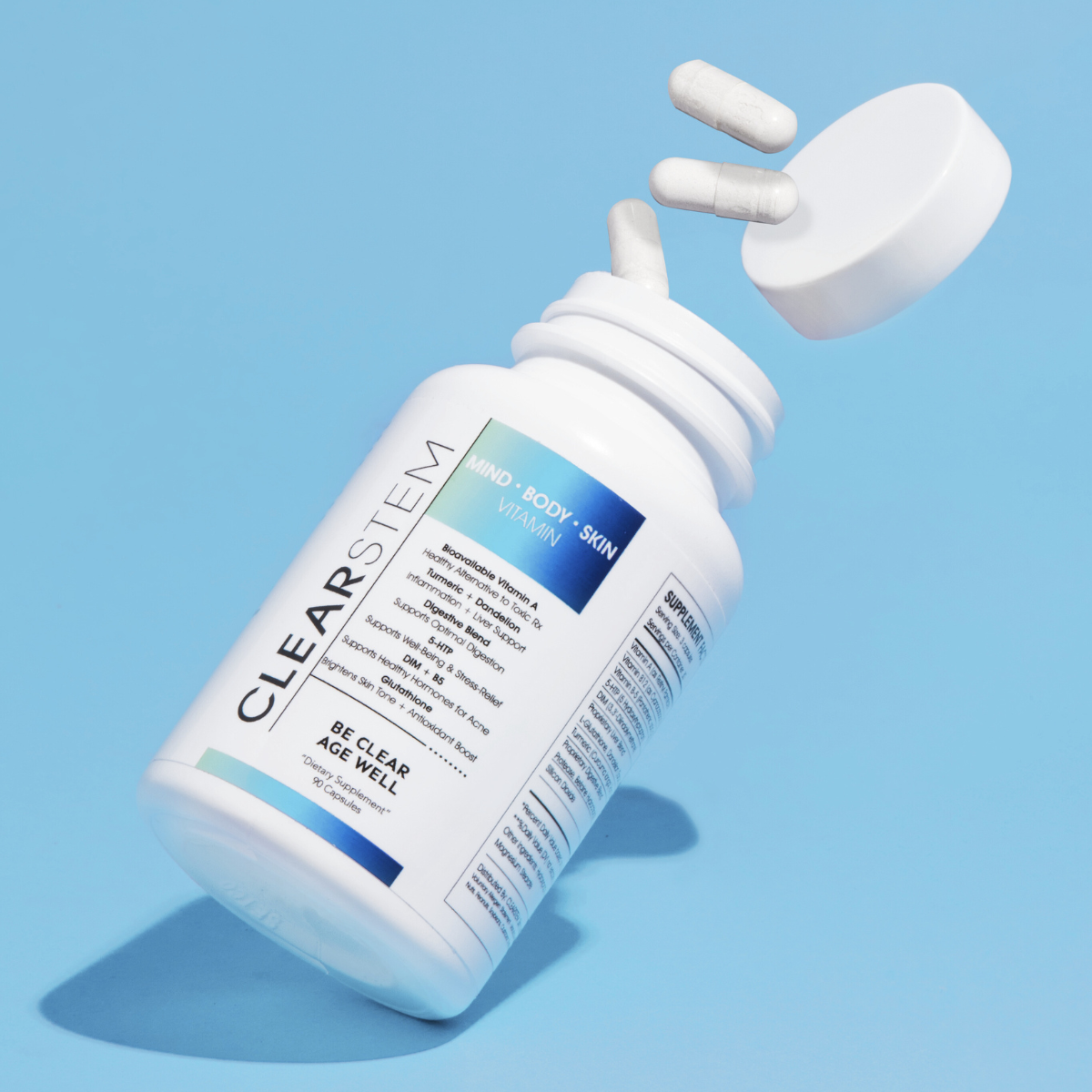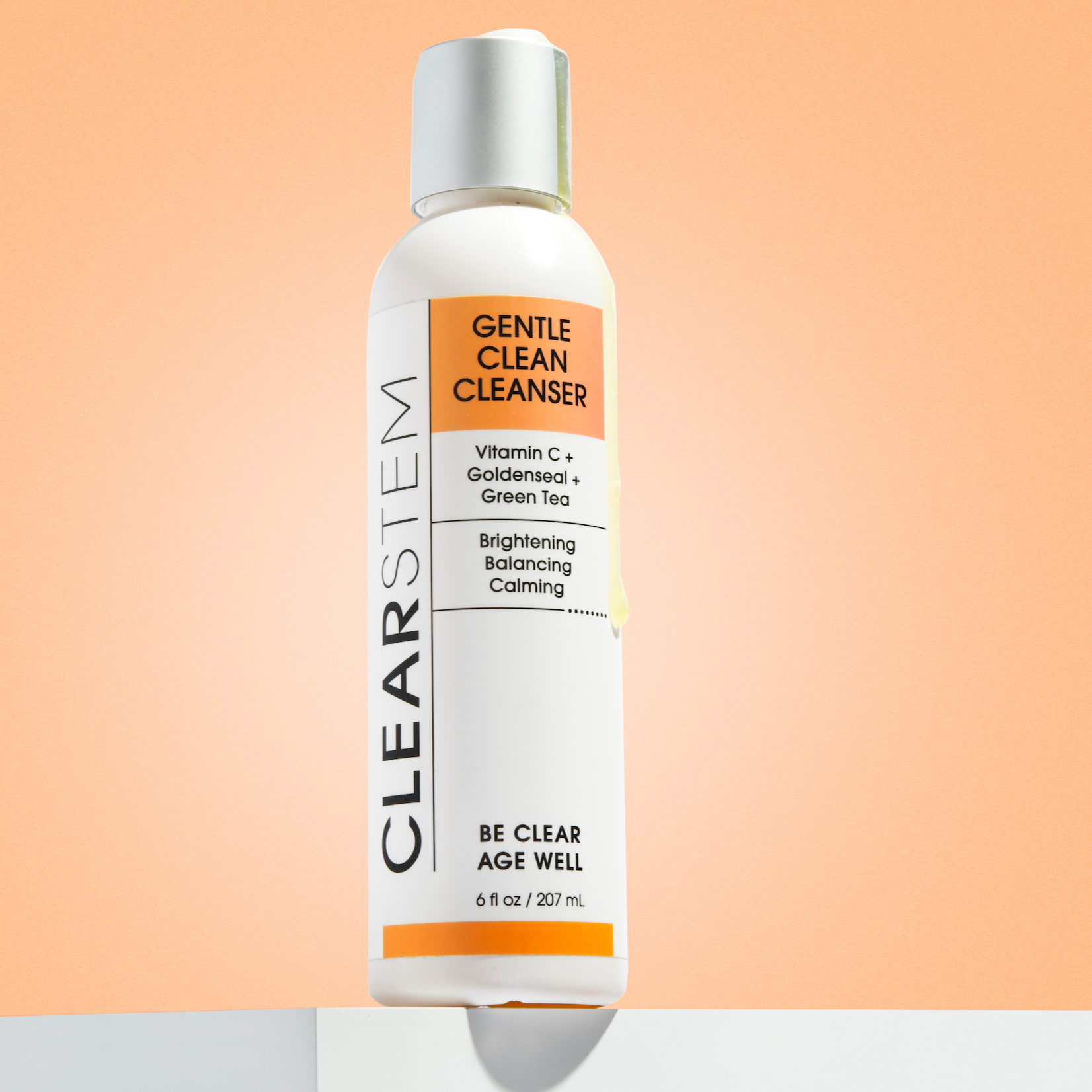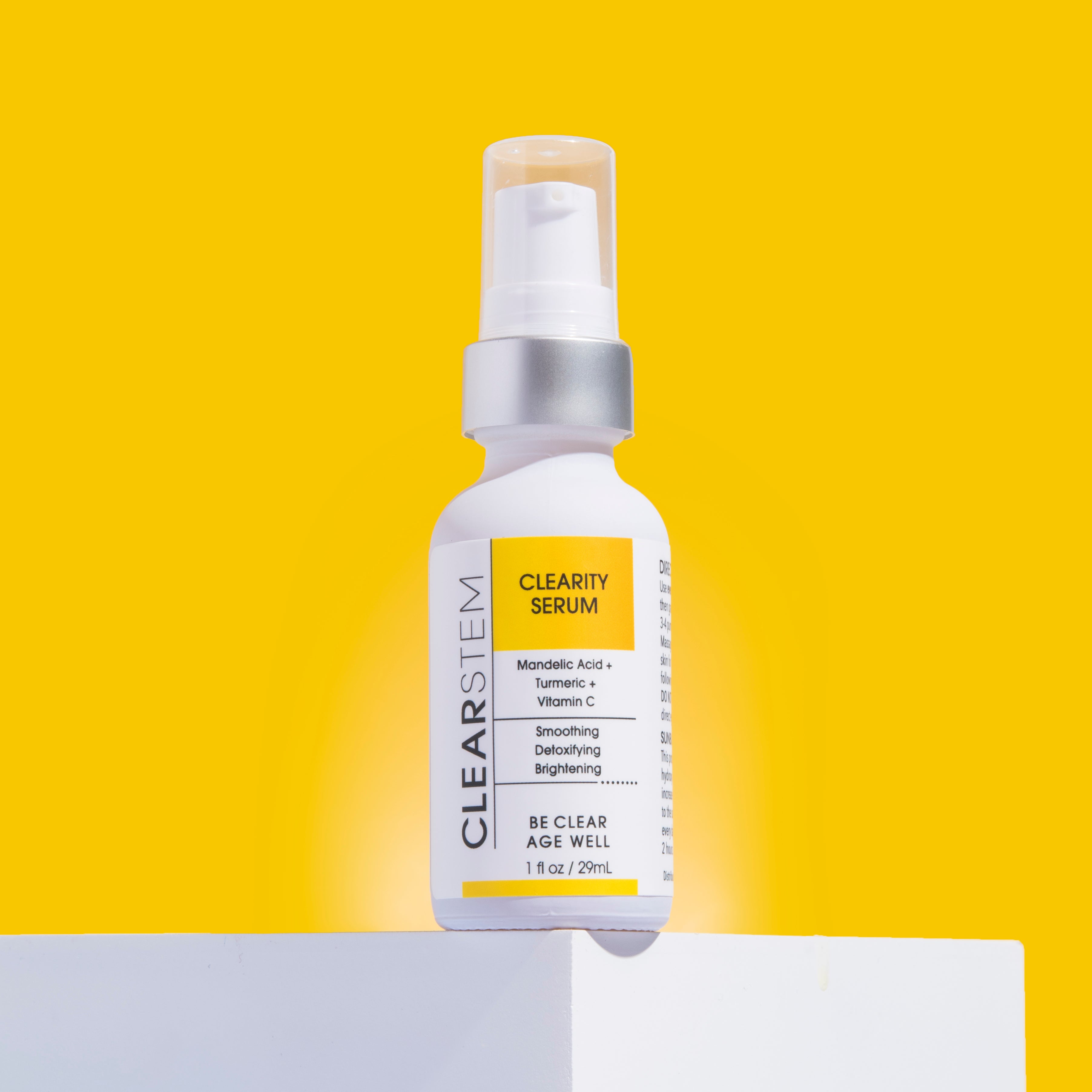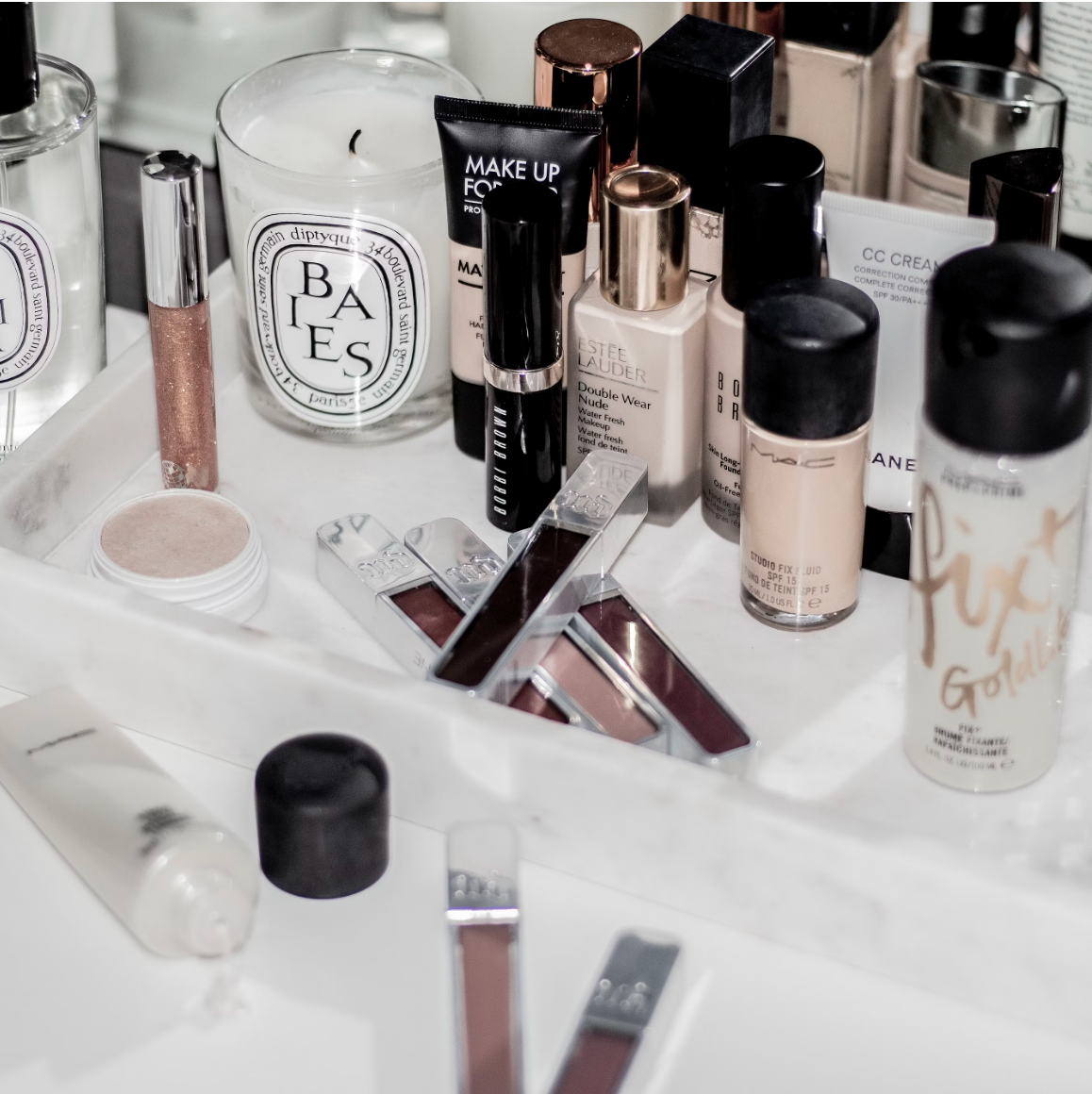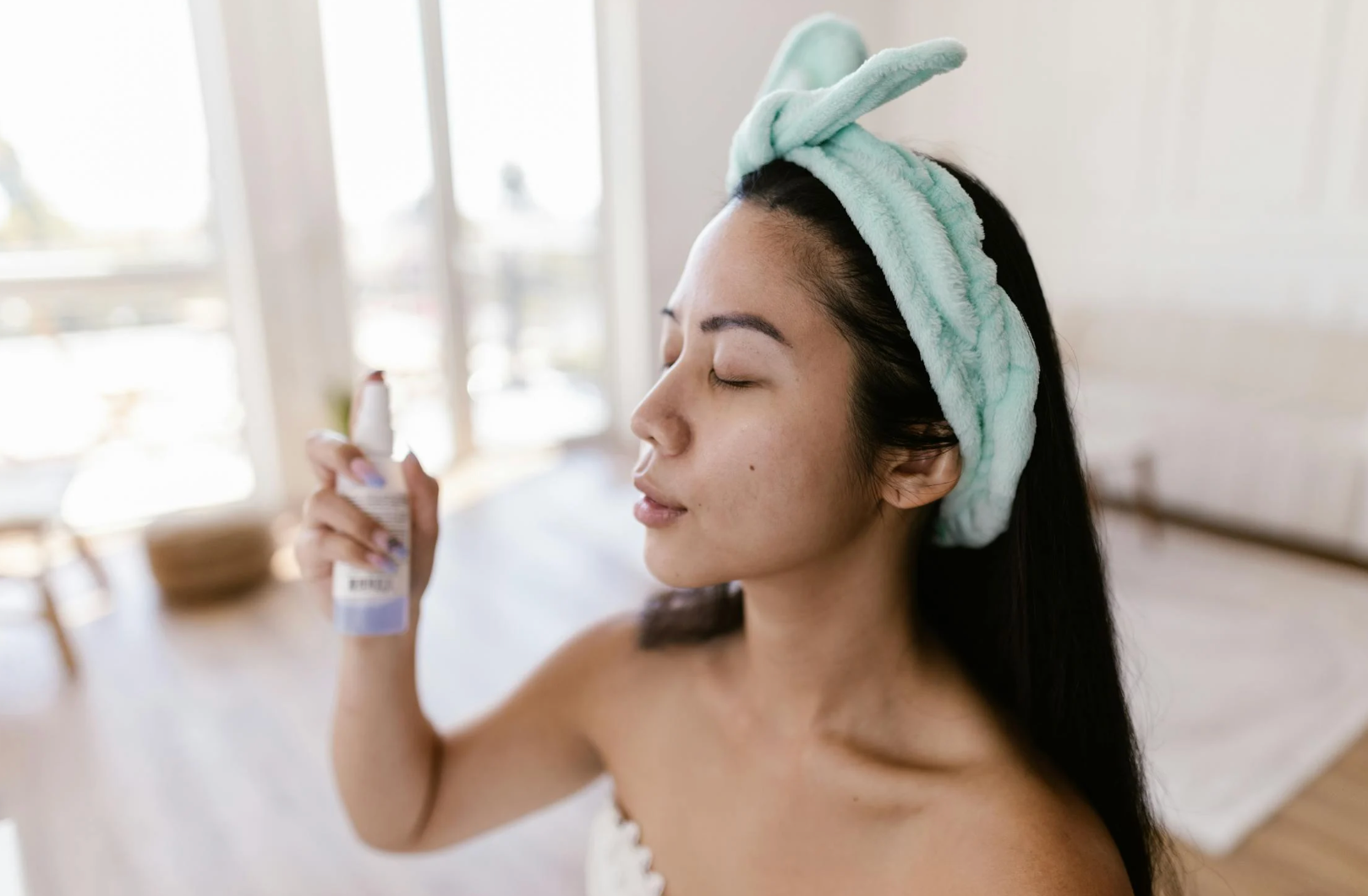Discovering acne on one side of your face can be jarring: Your right side is perfectly clear, but your left jawline is covered with rough, red bumps. What’s going on?
Trust that you’re not the first person to ask Google about the reasons behind “acne on one side of face.” Acne is not only the most prevalent skin condition in the US, but experiencing it only on one part of your face—be it your chin, forehead, or, yes, that whole left jawline—is a more common issue than you might think.
While it’s all too easy to brush off a breakout on common acne causes, consistently finding pimples on one side of the face may be indicative of a deeper issue. Let’s explore the why behind it—and how you can combat this skin condition in the name of a clear, beautiful complexion.
Why Am I Breaking Out on One Side of the Face?
Breaking out on one side of your face may be due to a whole host of reasons (more on this below) but it’s important to recall what prompts acne in the first place.
From a purely physiological stance, acne occurs when your pores become clogged with debris ranging from dirt to makeup to even dead skin cells. This triggers an inflammatory response as your body attempts to thwart the perceived invader and results in one or more of acne vulgaris’s many manifestations:
- Blackheads
- Whiteheads
- Papules
- Pustules
- Cysts
- Nodules
Whether you're suffering from cheek acne, neck acne, or chin acne, breakouts can develop almost anywhere on the body and in any pattern. While the root cause of all acne—inflammation—remains the same, why inflammatory acne occurs can vary widely. Persistent, discrete breakouts in specific areas can be a clue that something is a bit more awry than forgetting to wash your face after last weekend’s late-night date.
Overview of Acne Asymmetry
The issue of acne on one side of the face has been a subject of interest for centuries.
Ayurvedic medicine practitioners developed what’s contemporarily called “acne face mapping,” the idea being that different parts of your face are directly connected to certain internal organs. When acne stubbornly appears or recurs in one specific area, it may be telling you more than immediately meets the eye—and reveal the specific health issues and lifestyle factors that may be behind it.
Potential Causes of One-Sided Facial Acne
Whether you repeatedly experience a cluster of whiteheads on your forehead or blind pimples on your jawline, one-sided facial acne can typically be traced back to one or more of several overlapping reasons. These include:
- Lanolin
- Fragrances
- Dyes
- Silicone
- Sodium chloride
Naturally, these aren’t the only reasons behind acne that appears only on one part of the face—and we’ll touch upon a few other possible culprits below.
Types of Unilateral Facial Acne
Unilateral facial acne may emerge in any one of acne’s triggers listed above. Generally, it appears in one of the following areas:
- Forehead
- Chin
- Jawline
- Hairline
- Cheeks
- T-zone (or your chin, forehead, and nose)
Understanding Pattern and Distribution
As discussed, the location of breakouts can offer you a glimpse into your overall health and lifestyle while also giving you a peek into its precise causes:
Skin Health and Lifestyle Factors
As your body’s biggest organ, your skin is a direct reflection of your overall health and how you’re leading your life. Smoking, tanning, excessive alcohol, even skimping on sleep—all can impact your internal organs and the organ you show to the world.
Impact of Skincare Routine
Whether you have only the occasional bout of unilateral acne or frequently find blemishes on several parts of your face, consider your skincare routine and ask yourself the following questions:
Diet, Sleep, and Stress Influence
It’s an all-too-familiar scenario: After a super chaotic work week, you rise on Saturday morning to find that your T-Zone is covered with patchy, angry acne. But once you pause and reflect on how you’ve been treating yourself, you may discover that three of the biggest components that affect skin health—diet, sleep, and stress—were thrown totally out of whack M–F.
Let’s look briefly at each:
Treatment Approaches for One-Sided Acne
Treating acne on one side of face should mirror the same regimen you would use to treat all acne, such as:
- Use a gentle cleanser to wash your face twice a day
- Avoid scrubbing and harsh exfoliators that may cause irritation
- Reach for ingredients that work as powerful acne deterrents, such as squalene, Vitamin C, and natural exfoliators like alpha-hydroxy acids.,,
And if your blemishes persist? By all means, consider the advantages a dermatologist can provide, including an informed diagnosis of your unilateral acne’s causes and the best preventative measures for a clear complexion.
Prevention Strategies
The lifestyle changes outlined above—from cleaning off your phone to reducing your consumption of sugar—may make an enormous difference in the frequency and severity of your acne.
Additionally, if your blemishes are in fact caused by hormones, consider a solid hormonal acne supplement to restore your body’s balance.
Above all, seek out smart stress-busting tactics that will tone down inflammation—and leave you, and your skin, feeling cool, calm, and rested.
Addressing Unilateral Acne Concerns
Acne that emerges on one side of your face can stir up a great deal of emotions and concerns. But it can also be a valuable tool for understanding what’s going on with you internally, emotionally, and environmentally.
Experimenting with the strategies and lifestyle changes mentioned here may give you a leg up on fending off acne and mitigating blemishes when they appear.
Augment your efforts with CLEARSTEM’s skincare for acne-prone skin, a collection of exceptional products shaped by the latest dermatological research, and rest assured that only the most nourishing ingredients will have contact with your complexion.
Map out your ideal skincare routine with CLEARSTEM.
Sources:
American Academy of Dermatology. Skin conditions by the numbers.
https://www.aad.org/media/stats-numbers
Cleveland Clinic. What it means when acne is on certain areas of your face.
https://health.clevelandclinic.org/acne-face-map
Very Well Health. What your pores say about your skin.
https://www.verywellhealth.com/what-are-pores-15488
Healthline. Types of acne and how to treat them.
https://www.healthline.com/health/beauty-skin-care/types-of-acne#noninflammatory-acne
Health. Acne face mapping: how to determine the cause of your breakouts.
https://www.health.com/condition/acne/acne-face-mapping
Healthline. Hormonal acne: traditional treatments, natural remedies, and more.
https://www.healthline.com/health/beauty-skin-care/hormonal-acne
Cells. Evaluation of hormonal factors in acne vulgaris and the course of acne vulgaris treatment with contraceptive-based therapies in young adult women.
https://www.ncbi.nlm.nih.gov/pmc/articles/PMC9777314/
Byrdie. 7 makeup ingredients to avoid if you have acne-prone skin.
https://www.byrdie.com/makeup-to-avoid-for-acne-prone-skin-4777095
Circulation Research. A proinflammatory gut microbiota increases systemic inflammation and accelerates atherosclerosis. https://www.ahajournals.org/doi/10.1161/CIRCRESAHA.118.313234
Journal of Clinical Medicine. Potential role of the microbiome in acne: a comprehensive review.
https://www.ncbi.nlm.nih.gov/pmc/articles/PMC6678709/
Healthline. What that acne spot on your face means, according to science.
https://www.healthline.com/health/beauty-skin-care/pimple-acne-face-map#hairline
Harvard Health. Does diet really matter when it comes to adult acne?
The Journal of Clinical and Aesthetic Dermatology. Circadian rhythm and the skin: a review of the literature.
https://www.ncbi.nlm.nih.gov/pmc/articles/PMC6777699/
Clocks and Sleep. Acne severity and sleep quality in adults.
https://www.ncbi.nlm.nih.gov/pmc/articles/PMC7445853/
Healthline. Does Vitamin C treat acne?
https://www.healthline.com/nutrition/vitamin-c-for-acne
Cleveland Clinic. What is squalene?
https://health.clevelandclinic.org/squalane
Medical News Today. Understanding the difference between AHA and BHA for skin care.

